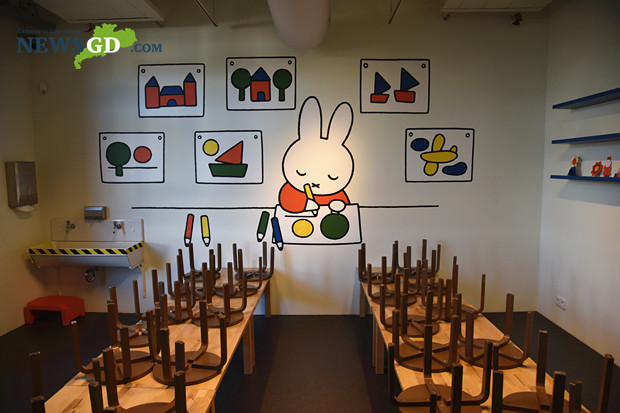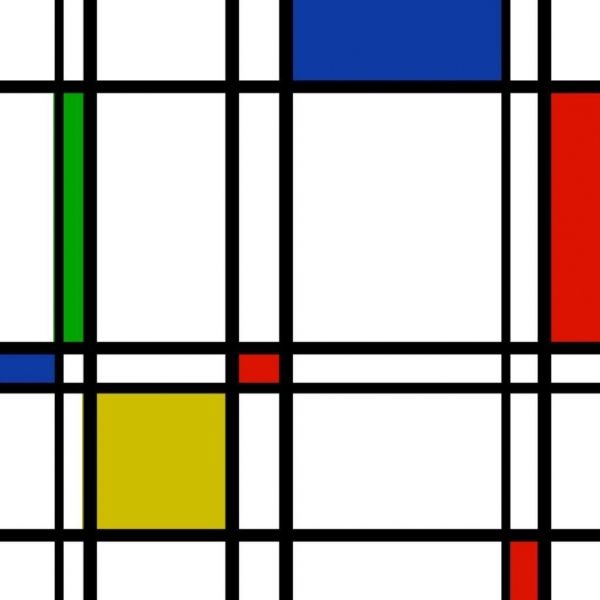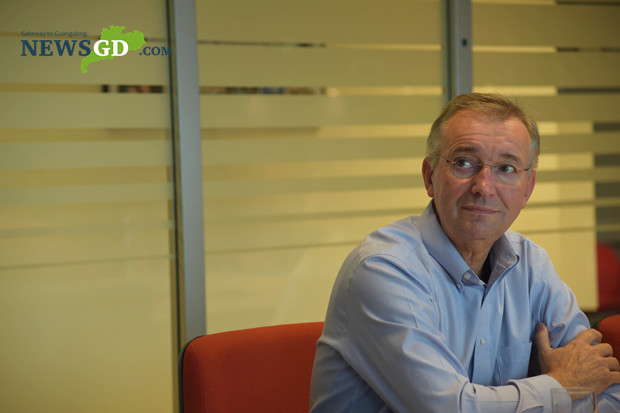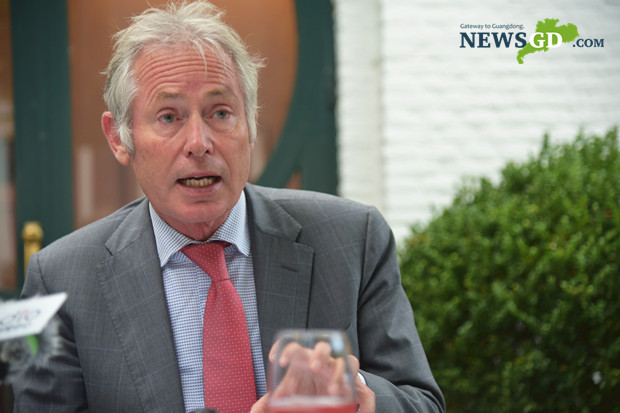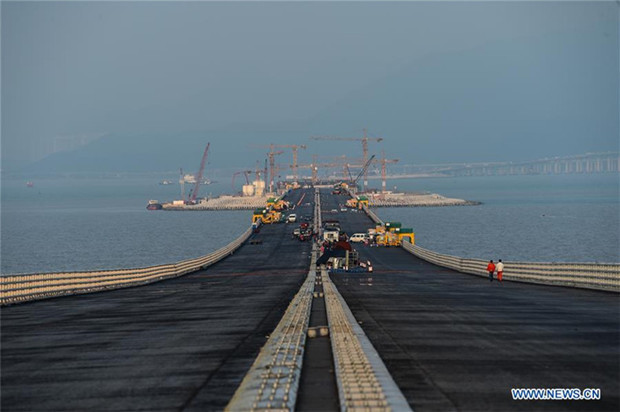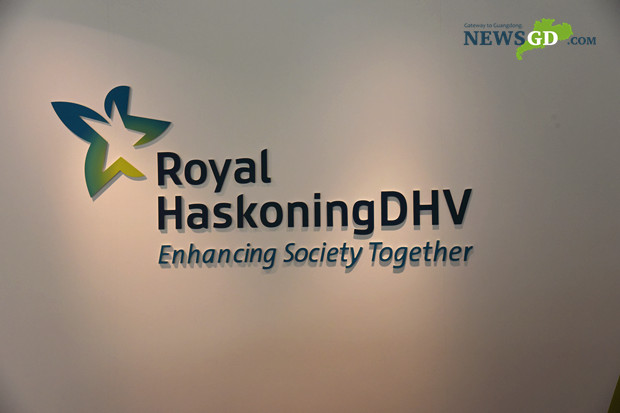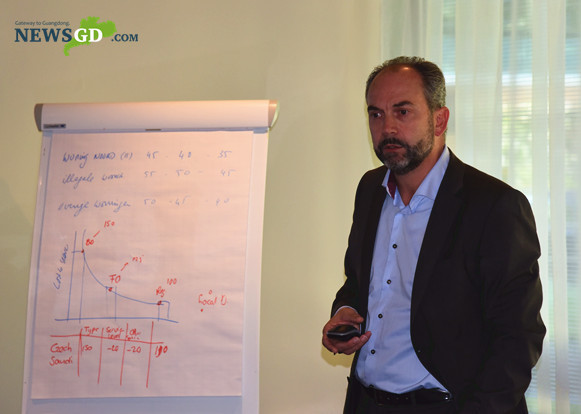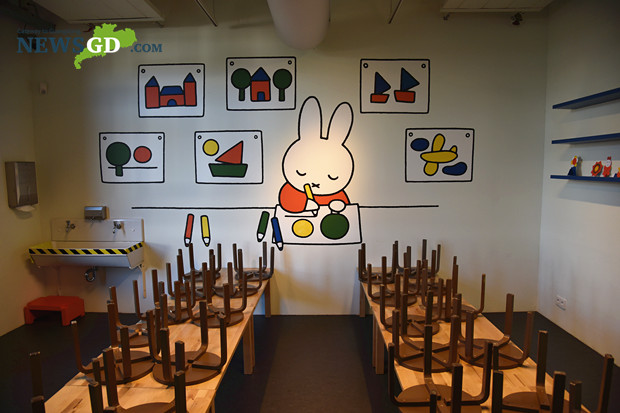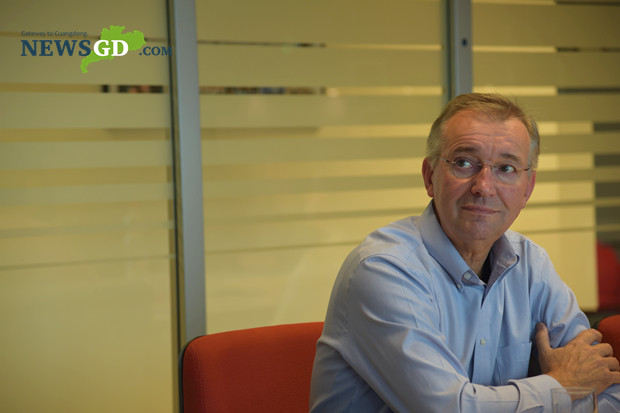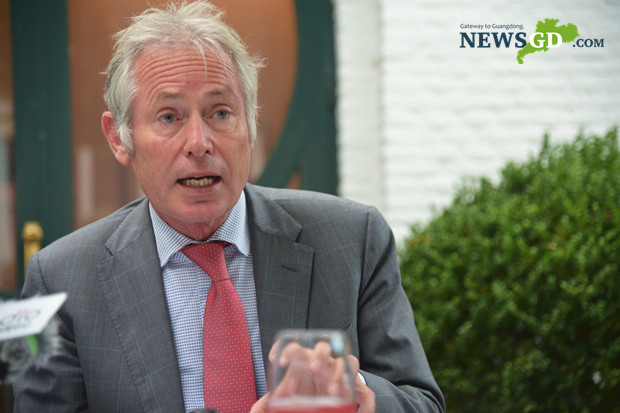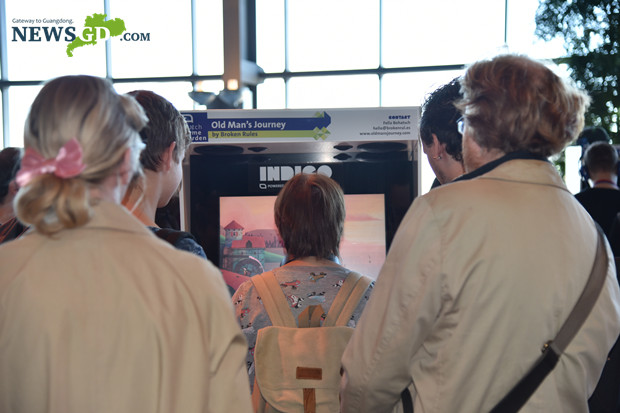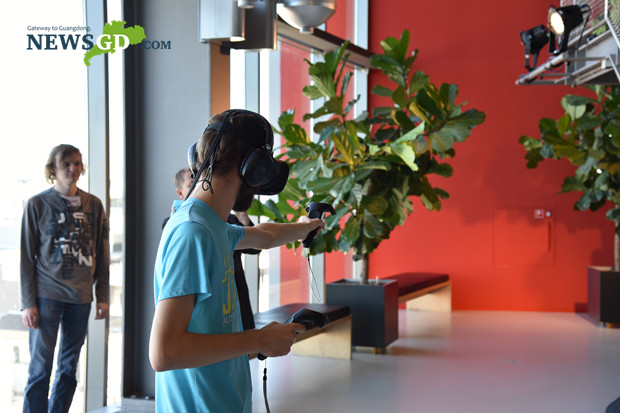Windmills, tulips and the lovely Miffy may be the first things people think of when talking about the Netherlands. However, the Netherlands also play an important role in the province of Guangdong, due to the cooperation between Guangdong and a Dutch region called the province of Utrecht.
Photo taken in Miffy Museum which located in the province of Utrecht, the birthplace of the lovely rabbit.
Located in the geographical heart of the Netherlands, the province of Utrecht has had a sister relationship with the Chinese region of Guangdong since 1995. With the development of this relationship, various programs have been launched over the past two decades.
In 2015, on the 20th anniversary of the sister relationship between Guangdong and the province of Utrecht, the two regions signed a joint declaration to deepen their bilateral cooperation, especially in the field of R&D and in building intelligent cities. And so far, four Guangdong companies have set up branches in this region..
According to European Innovation Scoreboard 2016 issued by EU, the Netherlands is awarded as one of the innovation leaders of Europe. As the geographical heart of the Netherlands, developed innovation & creativity sectors and leading research centers have been established in the province of Utrecht, which has produced 12 Noble Prize winners.
Since Guangdong is now developing an Innovation Driven Development Strategy, how exactly can Guangdong benefit from its European counterpart for developing the innovation industry?
“Thinking out of the box” is the key factor for innovation
“Dutch people are famous for thinking ‘out of the box’” said Pim van den Berg, Vice Governor of Utrecht.
From the past to the present, innovation and creativity sectors have been developing positively in the province of Utrecht. For instance, there’s Piet Mondrian (1872-1944), who reinvented non-representational style with white ground, black lines and the three primary colors; and there’s also Dick Bruna (1927-2017), who created the popular character Miffy in the city of Utrecht.
The non-representational style reinvented by Piet Mondrian.
In addition, Wi-Fi, one of the most important inventions of the 21st century, was also born in Utrecht 26 years ago.
Dutchman Frans Frielink invented the first wireless products (WaveLan) with his fellows in around 1991. He is now the vice-president of Qorvo (GreenPeak), a company that primarily focuses on building up smart homes through the Internet of Things. “Ten years ago, we said to ourselves that it is time to do something different,” said Frielink.
Frans Frielink, vice-president of Qorvo (GreenPeak).
After inventing Wi-Fi, Frielink “jumped out of the box” and founded GreenPeak in Utrecht city in around 2006 with his fellows who invented Wi-Fi. They are now concentrating on developing smart homes based on ZigBee, the next generation wireless home network which is similar to Wi-Fi.
“We are now active in the field of smart homes,” said Frielink. “More than 1 million ZigBee are shipped every week and the market is estimated to be worth around 60 billion RMB.
According to Frielink, the most innovative part of the smart home is that it can act like “Jarvis”, the AI assistant in the Iron Man film series. It can monitor everything in your home and analyze behaviors of your family so that you can get the latest information of your home via social media; for example, WeChat.
Frielink also thinks that the smart home could be a useful tool to fix the problems that result from an ageing society.
He said, “Many youngsters are too busy nowadays to take care of their parents or the elder generation every day. The smart home, however, can watch them every day and make sure they are fine through only a couple of sensors in the home.”
According to Frielink, Qorvo will soon be cooperating with TCL, an electric appliance manufacturer based in Huizhou, Guangdong.
The triple helix is the key for development innovation and creativity
Of course, “thinking out of the box” is not the only reason why the province of Utrecht has become the land of innovation and creativity – the region also relies on a developed “triple helix”, which consists of the government, industries, and universities.
“The ‘triple helix’ are working together to promote the innovative sector in Utrecht,” said Pim van den Berg. “We established the Economic Board of Utrecht (EBU) which consists of representatives from the ‘triple helix’ to support the economic development and innovation of the region.”
Pim van den Berg, Vice Governor of Utrecht introduces the key of innovation of the region.
As the only incubator of the gaming industry in Europe, Dutch Game Garden (DGG) is a classic example of the “triple helix”. “There are many small game companies in the province of Utrecht,” said Eline Muijres, Communications Manager for DGG.. “We basically provide lessons on business to the gaming companies and help them connect with publishers and investors.”
In order to bring games to the mainstream public, DGG organize a game expo called Indigo every year. Data shows that more than 110 games were displayed in the Indigo 2016, attracting over 1600 visitors, including some big companies such as Nintendo and EPIC Games.
Visitors waiting for playing the game at Indigo.
“Indigo is one of the biggest events for showcasing the games and their designers to the public,” said Muijres. “Many designers have just graduated from university and Indigo gives them a great opportunity to showcase their games to the public.”
“Ah! Oh my god! Just get them away from me!” at a booth for a Virtual Reality (VR) game, a girl was scared to death, due to the vivid first-person images. This vivid VR game is not designed by a big game company, but a couple of university students who study game engineering.
“We never expected this game to become so popular (in this event),” said Thierry Rehorst, one of the members of the designing team. “This is just a project for us, but we hope this game will be released on Steam (a worldwide online shop for games).”
Visitor experiencing the VR game which designed by Thierry and his fellows.
Under the support of the EBU, game engineering students can go abroad and communicate with foreign students. For example, Hogeschool voor de Kunsten Utrecht (HKU) and the Guangzhou Academy of Fine Arts co-organized an Applied Game Jam Event when the delegation of Utrecht province visited Guangdong in 2015.
Related story:
Sino-Dutch Applied Game Jam strengthens ties between Guangdong and Utrecht
“For the government, we support the creative industries by creating local infrastructure, like the DGG, and promoting them to investors and tourists.” said Pim van den Berg. According to the data, 72 start-up companies settled in DGG in 2014, and 71 games were issued. A great many young people have realized their dream with the support of DGG.
Dutch technology boosts the construction of Guangdong-Hong Kong-Macao Greater Bay Area
On May 2, 2017, construction on a 12-kilometer tunnel was begun, linking the E29 and E30 sinking pipeline of the Hong Kong-Zhuhai-Macao Bridge, the world’s longest sea bridge. Over 400,000 tons of steel was used to build the bridge, equivalent to 10 Bird’s Nests or 60 Eiffel Towers. It is reported that the bridge is scheduled to open by the end of this year.
Photo taken on April 28, 2017 shows as part of the Hong Kong-Zhuhai-Macao Bridge in Zhuhai, south China's Guangdong Province.
To finish the most difficult project in the world, one business cannot be ignored: Royal Haskoning DHV (DHV), a 136-year-old engineering consultancy from the Province of Utrecht, which is famous for its engineering design and project management.Royal Haskoning DHV (DHV), world famous engineering consultancy.
It is well known that Netherlands is a “low country”, suffering from the threat of the sea; therefore, the Dutch master advanced techniques to live with the sea in peace, and DHV is one of the few companies which is good at building things on/in the sea.
“The Hong Kong-Zhuhai-Macao bridge is one of the longest and deepest tunnels in the world,” said Rene Kuiper, Project Manager at DHV. “The technical difficulty of the bridge is the soil. We have to strengthen the soil and build the tunnel in the sea bottom, because some areas in the sea are soft soils.”
Rene Kuiper, Project Manager at DHV introduces the construction of the bridge.
In order to fix the soil problem, DHV sent experts in immersed tunnels from the Netherlands to China. Under the support of Dutch specialists, China Communication Construction, the contractor for the bridge, have designed a perfect solution to solved the soil problem by constructing concrete boxes on the land and connecting them in the sea.
Hans de Wit, CEO of TEC, which belongs to DHV, once said that their biggest contribution to the project is that they shared their experience on engineering construction with Chinese engineers and helped them to reach an advanced level.
Through the cooperation with DHV, China Communication Construction (CCC) have mastered the advanced manufacturing industry. With the experience of building the Hong Kong-Zhuhai-Macao Bridge, CCC is now taking charge of building the Shenzhen-Zhongshan deep tunnel, another challenging project, which officially began on May 1 this year.
The deep tunnel consists of 8-lane tunnel and 1666-meter cross-sea bridge, which is more complicated than the HK-Zhuhai-Macao Bridge. It is estimated that this project will be completed in 2024.
There is no doubt that the establishment of the HK-Zhuhai-Macao and Shenzhen-Zhongshan deep tunnel will not only stimulate the development of the Guangdong-HK-Macao Great Bay Area, but also provide new opportunities for Guangdong to further embrace the “Belt and Road” initiative.
2017 marks the 45th anniversary of the establishment of diplomatic relations between China and the Netherlands, and the “low country” is going to strengthen exchanges with Guangdong in different fields.
Related story:
It is time to enjoy original Dutch culture in Guangdong
“The Netherlands and Guangdong have long friendly relationship, and we want to continue this relationship.” said Marjo Crompvoets, the Consul-General of the Netherlands in Guangzhou.
Text and photos by Steven Yuen
Abby Chen and Ryan Hook also contribute to this story
(Please turn to next page for the Chinese version)
说起荷兰,也许你会第一时间想起这些词:风车王国、郁金香之国、可爱呆萌的米菲兔的诞生地。然而很多人可能并不知道,米菲兔的故乡和广东可是一对相识多年的老朋友了。
米菲兔博物馆一角
米菲兔诞生于荷兰地理中心的乌特勒支省。自1995年与广东省建立友好省关系以来,两省在不同领域的交流日益频繁并不断加深。
2015年恰逢两省结好20周年,广东省与乌特勒省支共同签署两省深化友好关系联合声明,全面加强在循环经济、智慧城市、文化创意产业等领域的交流合作。迄今为止,已有四家广东企业落地乌特勒支省。
根据欧盟委员会发布的欧盟创新能力排行榜上,荷兰被评为“创新领导者”。而作为荷兰的地理中心,发达的“双创”产业及优良的研发中心更是为乌特勒支省培养出了12位诺贝尔获奖者。
当前,广东正在大力实施创新驱动发展战略。那么,广东能从它远在欧洲的姐妹身上得到哪些关于创新的启示呢?
创新的关键在于“突破思维局限”
“荷兰人以创造性思维而出名。”乌特勒支省副省长Pim van den Berg这样说道。
无论过去还是现在,创新、创意产业一直在乌特勒支省得到充分的发展。在这里,皮特·蒙德里(1872-1944)安以格子画(主要创作元素为白板、黑色线条和三原色)重新定义了非写实主义。无独有偶,迪克·布鲁纳(1927-2017)也在这里勾画出呆萌的米菲兔。
皮特·蒙德里安在乌特勒支省重新定义了非写实主义
而21世纪最影响深远的发明——Wi-Fi,正是诞生在乌特勒支省。荷兰人Frans Frielink在1991年与他的同伴发明了世界上首个无线网络产品——WaveLan。
Qorvo公司副主席的Frans Frielink
“10年前,我们就对自己说,是时候做些与众不同的东西了,”Frielinks坦言。在发明Wi-Fi之后,Frielinks和他的团队毅然离开原来任职的公司,并在乌特勒支市成立了GreenPeak。目前,他们正致力于研发基于ZigBee技术并通过物联网构建的智能家居。
“我们现在专注于智能家居领域,” Frielinks说,“ZigBee的周发货量超过一百万,这个市场的估值可达600亿人民币。”
在Frielinks看来,智能家居最富创新的部分就是它可以像《钢铁侠》中的AI助手贾维斯一样工作。它可以监控你的房子,分析你家人的行为,使你能够通过如微信等社交媒体随时获知家里的最新情况。
Frielinks表示智能家居将是解决因人口老龄化而引发的社会问题的有力工具.“比如说,现在很多年轻人每天都忙于工作而无法照顾父母或其他长辈,”Frielinks解释说。“通过家里的传感器,智能家居可以帮助我们每天观看父母在家里的情况,确保他们的安好。”
Frielinks也提到,Qorvo正在跟总部位于广东惠州的电器生厂商TCL开展合作。
“三驾马车”为创新发展保驾护航
当然,乌特勒支省之所以能成为一片创新乐土,依靠的不仅仅是敢于摆脱常规的魄力,还有由政府、企业、高校组成的“三驾马车”合作机制。
“这‘三驾马车’共同推动了乌勒特支省的创新事业发展,”副省长Pim van den Berg说道。“为了促进本地区经济和创新发展,我们专门成立了Economic Board Utrecht,主要成员均为来自政府、企业和科研机构的代表。”
乌特勒支省副省长Pim van den Berg先生
作为欧洲独一无二的游戏产业孵化器,Dutch Game Garden是“三驾马车”机制的典型代表。 “乌特勒支省有很多小型游戏公司,”Dutch Game Garden的公关经理Eline Muijres说道。“我们主要是为这些公司提供商业领域的相关课程和帮助他们联系厂商和投资者。”
Dutch Game Garden每年都会举办一个名为Indigo的游戏展来帮助这些游戏走进大众的视野。数据显示Indigo 2016共展出了超过110款游戏,吸引了1600名观众,其中一些观众更是来自任天堂、EPIC Games等著名游戏公司的代表。
游客们排队等候试玩游戏
“Indigo是最大的向公众展示游戏及其设计者的展会之一,”Muijres 说道。“很多游戏设计者刚从大学毕业,而Indigo为他们提供了展示作品的难得机会。”
“天哪!快点把它们弄走!”在一个VR游戏的摊位前,逼真的第一人称游戏视角把一位女孩子吓得花容失色。然而,这款游戏的创作者并不是那些游戏巨头,而是几个游戏工程专业的大学生。
“我们从来没有想过这款游戏能(在展会上)这么受欢迎,”游戏设计团队的成员Thierry Rehorst说道。“这其实只是我们课程作业,但我们也希望这个游戏能够在Steam这个全球性网络游戏商店上发布。”
一名游客正在试玩Thierry Rehorst及其同伴设计的VR游戏
除此之外,在EBU的支持下,游戏工程专业的学生也有机会出国与外国学生交流。例如,在2015年乌特勒支省代表团访问广东期间,乌特勒支艺术学院和广州美术学院就联合组织了一场别开生面的应用游戏设计活动。
“政府的角色就是不断完善基础设施建设,如成立Dutch Game Garden等项目,并且将这些创新产品推广给投资者或旅客,做创新事业发展的坚实后盾,”副省长Pim van den Berg说道。数据显示2014年有72家初创公司在DGG扎根,同年也有71款游戏被发布。无数的年轻人在Dutch Game Garden的支持下,打开了通往梦想的大门。
荷兰科技为粤港澳大湾区建设添砖加瓦
2017年5月2日,世界最大的跨海大桥——港珠澳大桥的E29和E30两节沉管的最终接头成功下沉并接上了大桥的“最后12米”。港珠澳大桥的建设耗费超过40万吨的钢铁,其用量可再造10个鸟巢和60个埃菲尔铁塔。有报道称港珠澳大桥即将于今年年底正式通车。

港珠澳大桥一角。该大桥计划2017年年底通车 (照片来源:新华社)
在这一全球最具挑战性的工程的建设过程中,来自乌特勒支省的技术支持同样不容忽视。乌特勒支省当地一家历史长达136年、擅长工程设计和项目管理的工程咨询公司Royal Haskoning DHV (DHV) 也为港珠澳大桥的建设贡献了力量。
众所周知,荷兰地势低平,极易受到大海的威胁。荷兰专家因此钻研出了与海洋和平相处的方法,而DHV正是仅有的几个擅长海上建设的公司之一。
“港珠澳大桥的海底隧道是世界上最长和最深的沉管隧道。”DHV的工程经理Rene Kuiper表示。“建造港珠澳大桥需要克服的主要技术难题是土壤。Kuiper解释道:“因为海底存在一部分软土,所以我们必须先加固土壤,然后才在海底开建隧道。”
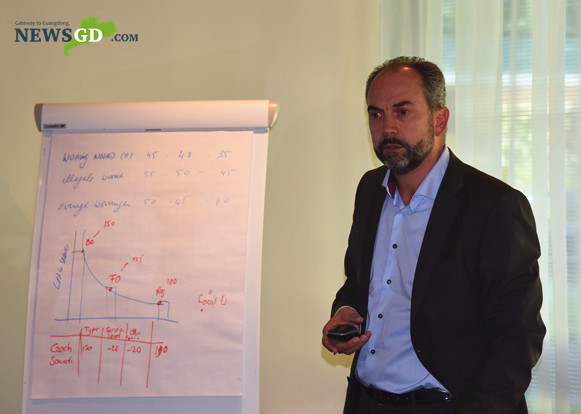
DHV的工程经理Rene Kuiper介绍港珠澳大桥建设情况
为了解决土壤问题,DHV特地将海底隧道方面的专家从荷兰派往中国。而在荷兰专家的支援下,港珠澳大桥的承建商——中国交建通过先在陆地上组建混凝土箱,再将其运往海底进行拼接,完美地解决了这一难题。
Hans de Wit是DHV旗下子公司TEC的首席执行官。他曾说过,将DHV积累的经验与中国工程师分享,并一同设计出更符合中国地理环境的建造方法,是DHV对港珠澳大桥这一项目做出的最大贡献。
正是通过与DHV的合作,中国交建充分吸收了国际的先进技术,并创新出“组合机床”这一新方法。凭借着在港珠澳大桥上的经验,中国交建现又承担起另一项重大工程——深圳至中山海底隧道。该项目已在今年5月1日正式动工。
八车道海底隧道、主跨1666米的海中悬索桥,深中隧道的建造远远复杂于港珠澳大桥。这一项目预计将于2024年完成。
毋庸置疑,港珠澳大桥和深中隧道的建成不仅将激发粤港澳大湾区的发展活力,而且将为广东积极参与“一带一路”倡议创造更多机会。
2017年恰逢中荷建交45周年,荷兰与广东将继续在多个领域加强彼此的合作。“荷兰与广东的友谊源远流长,我们也希望这段友谊能够一直延续下去,”荷兰驻广州总领事郭媚姚说道。
英文撰文,摄影:袁子翔
中文撰文:陈锦霞

















